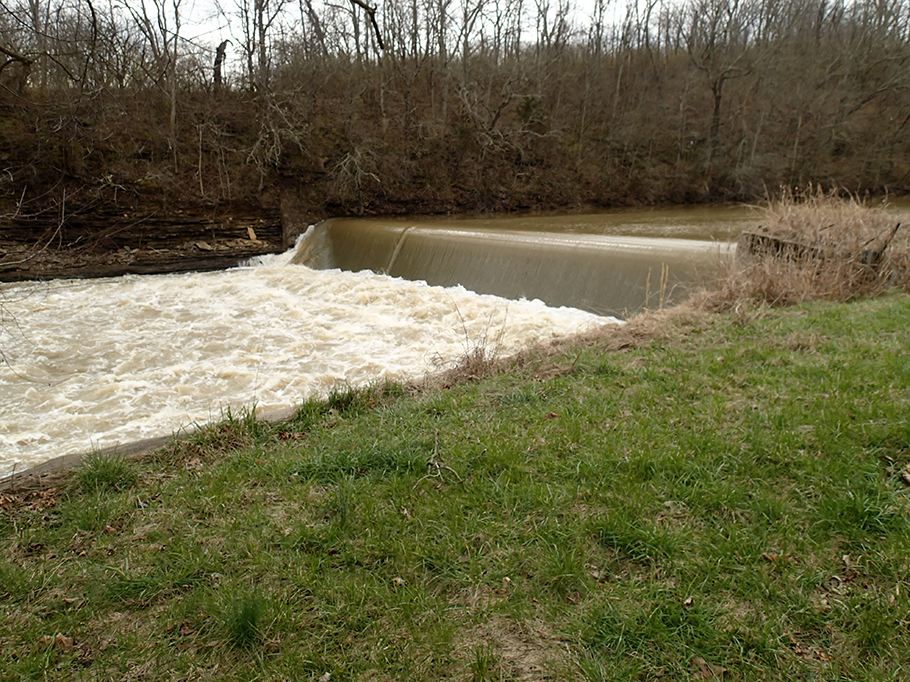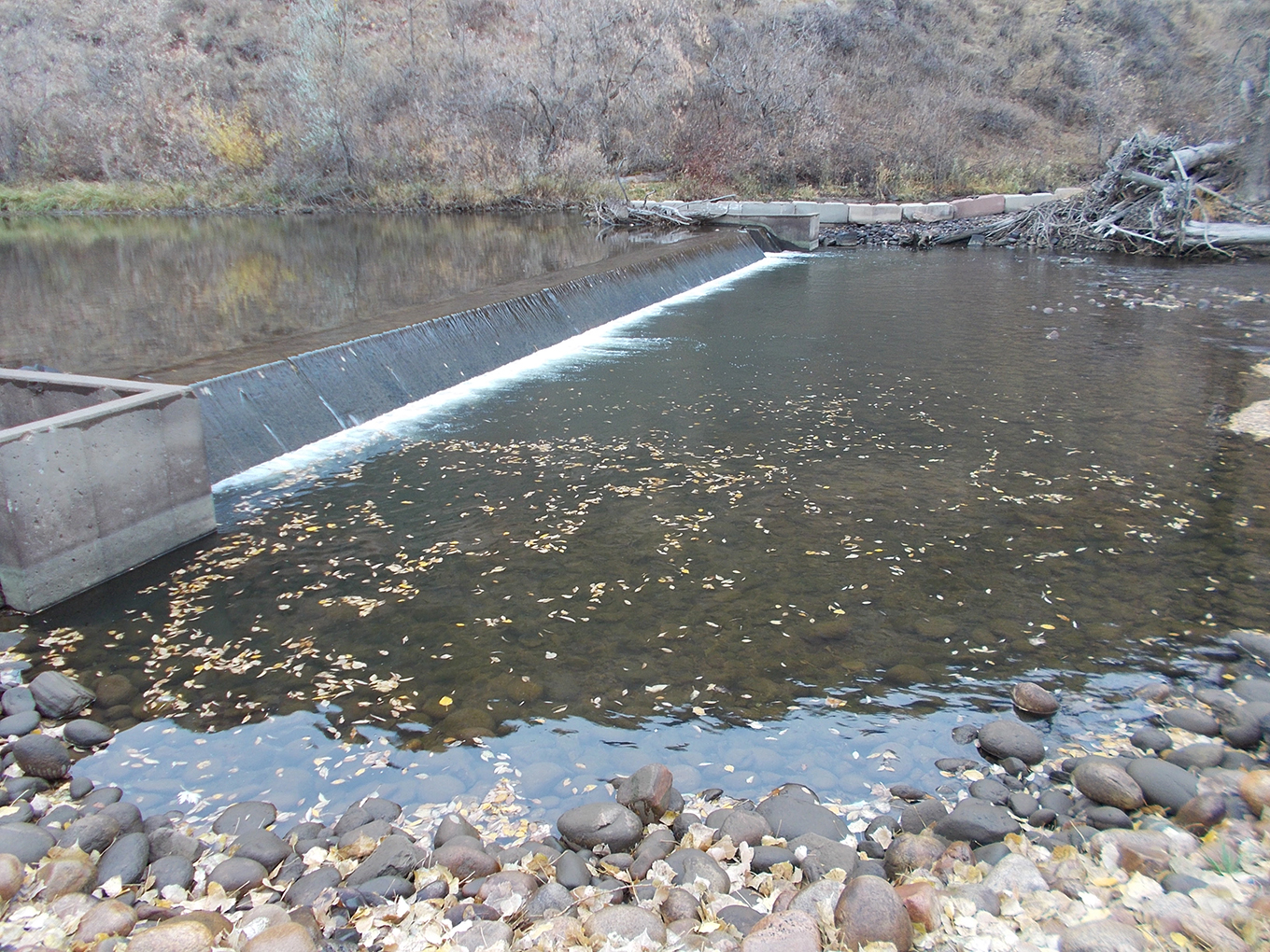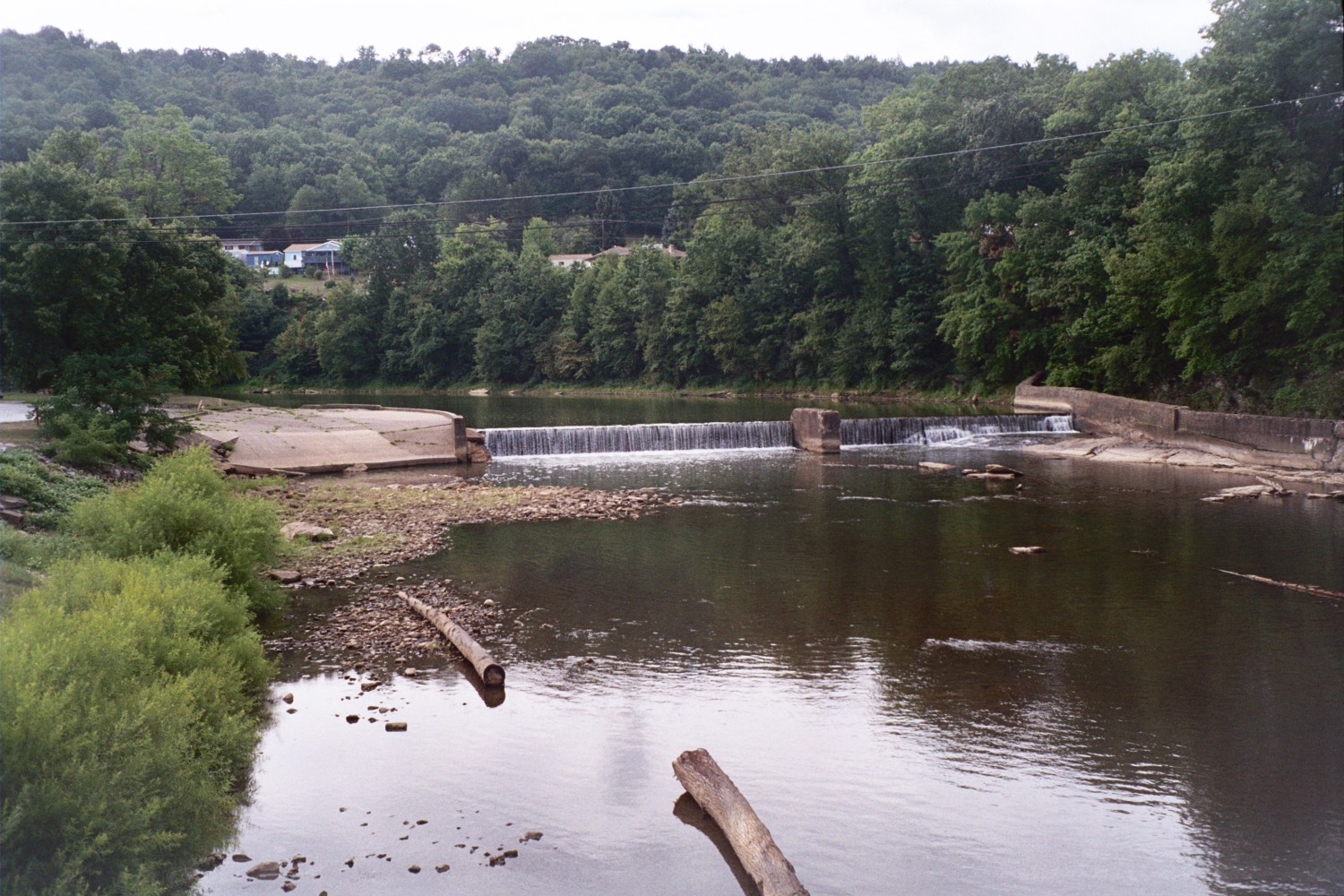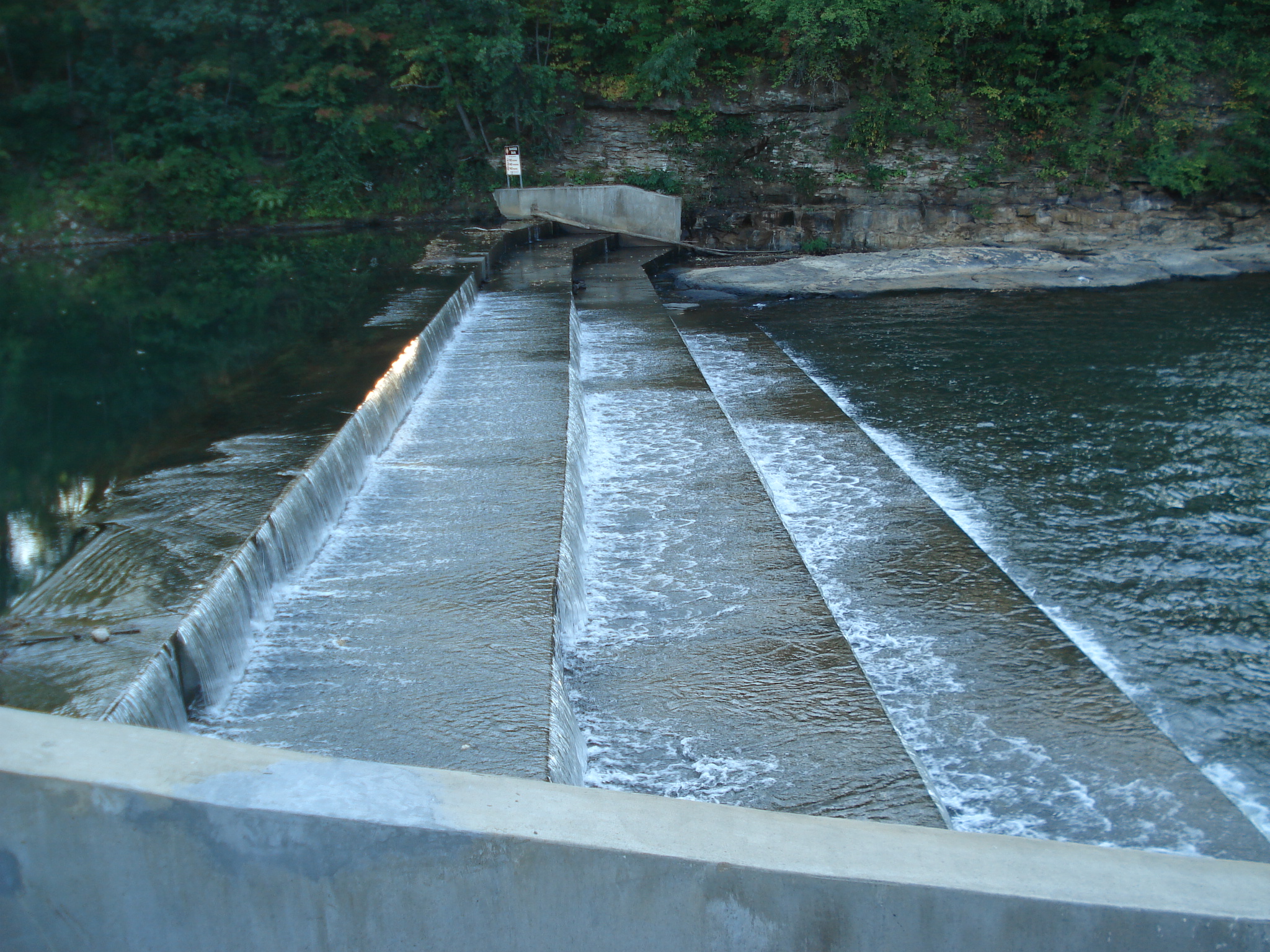No one builds a dam to kill people. Yet every year in the United States, more than four dozen people die as a result of relatively small, extremely common structures known as low-head dams. Capable of generating dangerous hydraulic conditions at certain flow levels, these types of dams have earned the ominous nickname “drowning machines” for their ability to trap and drown unsuspecting victims. In response, a coalition of civil engineers, academics, professional organizations, and regulatory agencies is working to raise public awareness about low-head dams and promote efforts to reduce the dangers associated with them.
Typically ranging from 5 to 15 ft in height, low-head dams are designed and constructed to span waterways. Also referred to as run-of-the-river dams, the structures result in continuous flows of water over the dam’s crest from bank to bank. In the western United States, low-head dams are commonly known as diversion dams because they are commonly used to divert water from streams to canals or ditches for irrigation.

Death by reverse roller
What makes low-head dams dangerous is their propensity to form “reverse rollers” that create a recirculating flow pattern, trapping victims at their base, says Ken Wright, P.E., D.WRE, Dist.M.ASCE, the founder, chief financial officer, and principal engineer for Wright Water Engineers Inc. A reverse roller occurs when hydraulic conditions are such that a high tailwater results in a submerged hydraulic jump. In such cases, “water flows over the dam, travels along the bottom of the stream, and rises up at a place called the boil zone,” Wright says. When a significant portion of the rising water flows upstream, it “creates the reverse roller that provides the drowning-machine phenomenon,” he says.
Individuals trapped in a reverse roller are forced back to the base of the dam, where water passing over the crest submerges them below the surface and returns them to the boil zone. Typically, this process of recirculation repeats itself, drowning the victim. Complicating matters, air entrainment in the boil zone reduces buoyancy, making it harder for someone in the reverse roller to remain afloat. The presence of a reverse roller also poses a threat to anyone approaching a dam from downstream, including first responders attempting to engage in water rescues.
About 50 fatalities typically occur each year at low-head dams nationally, and the number appears to be increasing as more people recreate on rivers, says Paul Schweiger, P.E., a vice president and manager of the dams and hydraulic section for Gannett Fleming and the chair of the Association of State Dam Safety Officials’ Public Safety Around Dams Committee. “Some dams have a notorious history, going back more than 100 years,” Schweiger says. “I know of at least one dam that has had more than 30 fatalities.”
Not all low-head dams are deadly. Determining whether a particular dam might become a drowning machine requires careful analysis. “You could look at (a low-head dam) and say it’s likely a hazard, but you can’t prove it without some hydraulic engineering calculations,” Wright says.

That said, visually inspecting a low-head dam under varying flow conditions can provide clues as to whether the structure generates reverse rollers, says Karl Kingery, P.E., M.ASCE, a project manager for WWE. A key indication is the presence of the boil zone, which is identifiable by the existence of water “boiling up vertically” in a line from bank to bank, he says. Having a white, frothy appearance because of the large amount of air it contains, the boil zone is “higher than the surrounding water upstream and downstream,” Kingery says. Another key sign of a reverse roller is the presence of logs or other debris bobbing up and down while trapped at the base of a dam, he says.
Because river conditions can change from one day to the next based on rainfall, so too can the risk posed by a low-head dam. “That is the insidious part of low-head dams,” says Ruth Wright, a former Colorado state legislator who champions efforts to address the dangers associated with the structures. (The Wrights are married).
A national inventory
Because no one knows how many low-head dams exist in the United States, it is impossible to say for sure where most such structures are located, says Rollin Hotchkiss, Ph.D., P.E., D.WRE, F.ASCE, a professor of civil and environmental engineering at Brigham Young University. However, low-head dams appear to be “more prevalent in the arid West where irrigation occurs and in the Northeast from colonial times,” he notes. “There are, though, low-head dams in every state.”
For example, a recent inventory of low-head dams in Colorado found more than 1,100 such structures, says Bill McCormick, P.E., P.G., the chief of the Dam Safety Branch within the Colorado Department of Natural Resources and the current president of ASDSO. In 2019, the DNR conducted the inventory by using Google Earth to search for the locations of known water diversions in the state. In this way, the DNR identified 793 diversion dams, 248 grade-control structures, and 62 features used either for recreation or to provide fish habitat. In October 2020, the DNR made this information available on its website as part of a new initiative to increase public safety around low-head dams.
By inventorying and publicizing the locations of low-head dams within its borders, Colorado “really is a model state when it comes to addressing issues” at such dams, Schweiger says. With certain exceptions, most states do not know how many low-head dams they have, he says.
To overcome this dearth of information, a task force involving three professional organizations is developing a national inventory of low-head dams. Comprising members from ASCE’s Environmental and Water Resources Institute, ASDSO, and the United States Society on Dams, the task force is making “steady progress” since beginning about 18 months ago, says Hotchkiss, who chairs the group.
Creating the national inventory involves several tasks, including compiling existing low-head dam inventories done at the state level. Besides Colorado, the states of Indiana, Iowa, Kansas, Nevada, North Dakota, and Utah have completed inventories. Other efforts include developing a digital application to enable users to identify the locations of low-head dams encountered in the field.
The task force is seeking volunteers to use Google Earth Pro to help with the inventory. The volunteers will locate and identify low-head dams by noting the characteristic line of white water that is readily visible in aerial images. (Those interested in volunteering can contact Hotchkiss at [email protected]) However, the task force seeks to ultimately automate this time-consuming process through the use of artificial intelligence, specifically to “train software to examine photographs and find low-head dams automatically,” Hotchkiss says. “Progress will be accelerated as we can develop those algorithms,” he notes. Information developed as part of the national inventory will be made publicly available on a dedicated website that will be launched this spring.
Clear solutions, many complications
The simplest approach to mitigate the danger of a low-head dam involves using signage to warn of the dangers of a dam. “A sign helps bring awareness of a hazard,” Kingery notes. “But it doesn’t change any of the characteristics of the dam.”

Although removing a dam eliminates the threat, this solution often is not available for reasons of cost or impracticality. In some cases, low-head dams can be modified in various ways to prevent the hydraulic conditions that lead to reverse rollers. “One of the things that make low-head dams so dangerous is the uniformity of the reverse roller across the base of the dam,” Kingery says. To alleviate this problem, a dam may be modified by means of changes to its crest or the addition of rock fill or ramps at its base.
However, complications abound for anyone looking to push for measures to improve safety at low-head dams. For one thing, the dams often do not fall under the purview of state dam safety programs, which tend to focus on larger dams. “Our normal dam safety tools really don’t apply to low-head dams,” McCormick says.
Liability is another concern. Particularly for older dams, ownership may be unclear or unknown, and local governments or other entities often hesitate to act for fear of assuming future liability associated with a dam.

Civil engineers may be at risk of litigation if they engage in efforts to improve the safety characteristics of a dam, says Ed Krisor, an attorney who represents multiple Colorado government entities in the drainage and flood control area. “One of the risks is once you go into the area of suggesting solutions, you then run the risk that someone could go after you,” Krisor says. Current case law, he notes, is unclear on the subject, contributing to the uncertainty.
Raising public awareness
Looking to make future generations of civil engineers aware of the dangers of low-head dams, a group has developed a PowerPoint presentation that it is distributing to civil engineering professors to share with their students. Hotchkiss helped prepare the presentation along with WWE, Ken Wright, Ruth Wright, and Robert Houghtalen, an adjunct professor at the University of North Carolina Wilmington and the former head of the Civil and Environmental Engineering Department at the Rose-Hulman Institute of Technology.
Based on his experience sharing the presentation with his students, Houghtalen is confident that the gravitas of the subject will hold the interest of students elsewhere. “My students paid more attention to that presentation than to any other during the semester,” he says.
In Colorado, the DNR’s low-head dam initiative includes adding signs near certain dams, educating emergency responders, and working with various groups to raise awareness of the dangers. Because recreationists are a key target of the campaign, the department is working with the local chapter of American Whitewater to help make its members aware of the locations of low-head dams in Colorado. The DNR’s McCormick says that someone once asked him how he would know if his department’s initiative had succeeded. His answer? “A summer without any fatalities from low-head dams,” he says.



